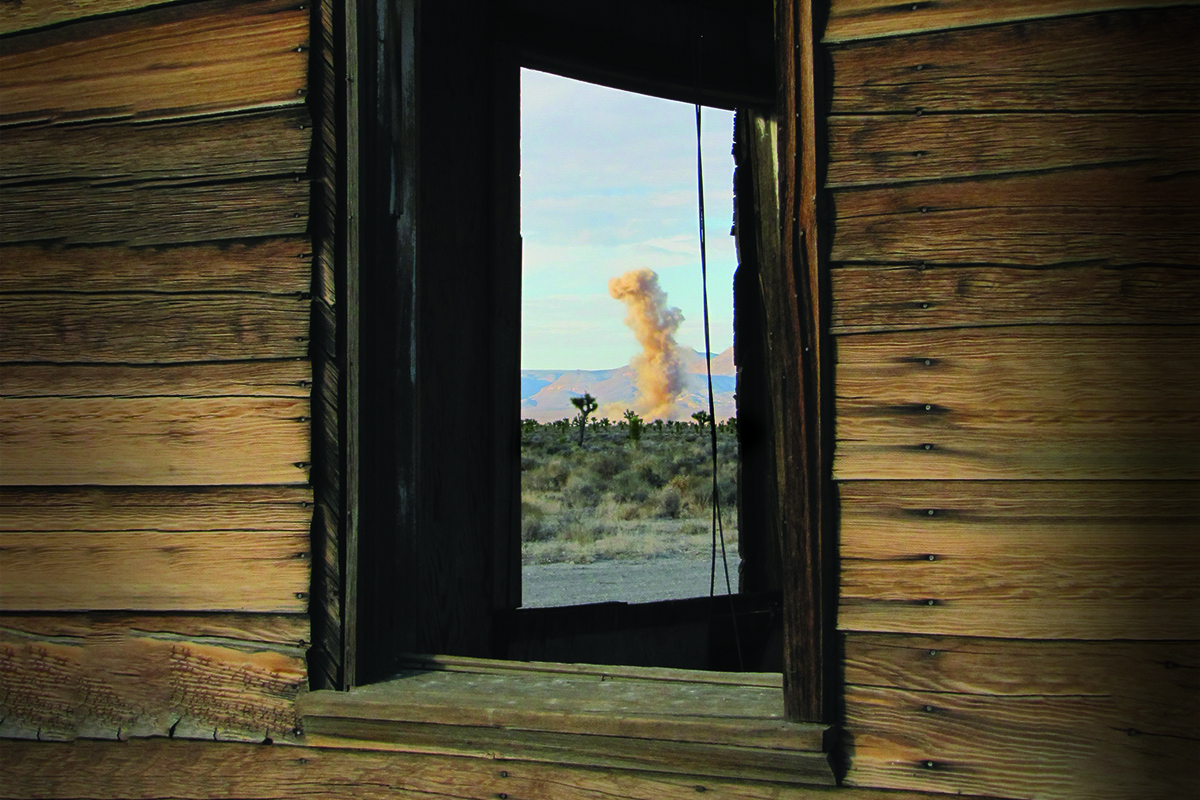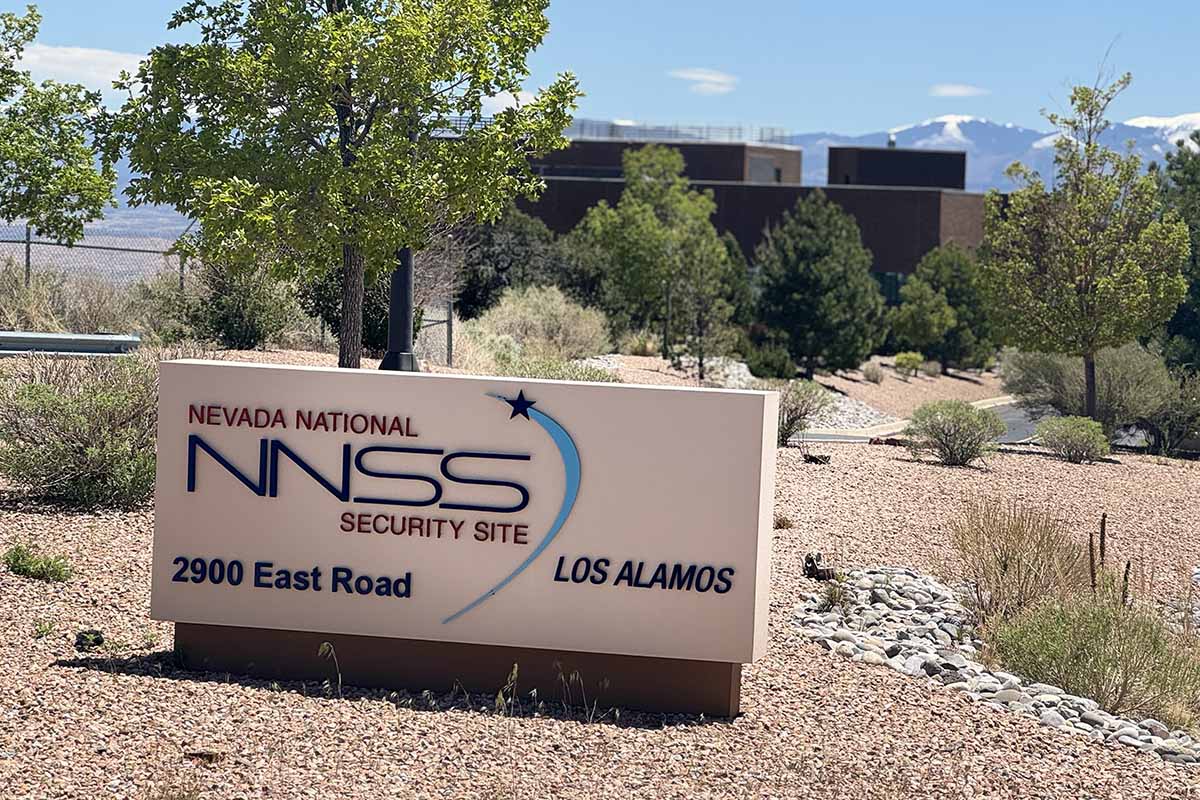Going critical
Decades after their creation, the four critical assemblies at the National Criticality Experiments Research Center continue to enable vital research.
- Jake Bartman, Communications specialist

The National Criticality Experiments Research Center (NCERC), which Los Alamos National Laboratory operates at the Nevada National Security Sites, is the only place in the United States where researchers conduct general-purpose criticality experiments. These experiments involve configuring pieces of nuclear material—uranium or plutonium, for example—in such a way that the material achieves criticality (undergoes a self-sustaining nuclear chain reaction).
To conduct criticality experiments, researchers use four machines, which are called critical assemblies: Comet, Flattop, Godiva IV, and Planet. These critical assemblies were built by Los Alamos and used for decades at the Los Alamos Critical Experiments Facility (LACEF) before being relocated to NCERC in the 2000s. Over the years, the machines have been refurbished and updated, and more recently, each critical assembly was outfitted with modern digital controls. Researchers at NCERC are exploring how additional assemblies could be added to NCERC in the future.

Taken together, the four machines at NCERC constitute the largest collection of critical assemblies in the western hemisphere. Read on to learn how, decades after they were created, NCERC’s critical assemblies continue to support a broad range of national security–related research.
Comet
Built by researchers at LACEF in the 1950s, the Comet critical assembly was originally named “Haley’s Comet” after its designer, Jano Haley. Comet is a heavy-duty vertical lift assembly that comprises a movable lower platform and a stationary upper platform. Subcritical configurations of nuclear material and reflectors can be arranged on both the upper and lower parts of the assembly, and when these parts are brought together, a critical mass is achieved.
Over the decades, Comet has been used for a breadth of experiments. Among the first was 1952’s Jemima Critical Assemblies, which used highly enriched uranium in the form of “Jemima plates” (so called because of the plates’ resemblance to pancakes). This experiment led to an accidental prompt critical reaction, which produced a sudden and intense burst of neutrons. The accident revealed a need for a machine designed to produce prompt critical reactions, leading to the creation of the Lady Godiva critical assembly (see below).
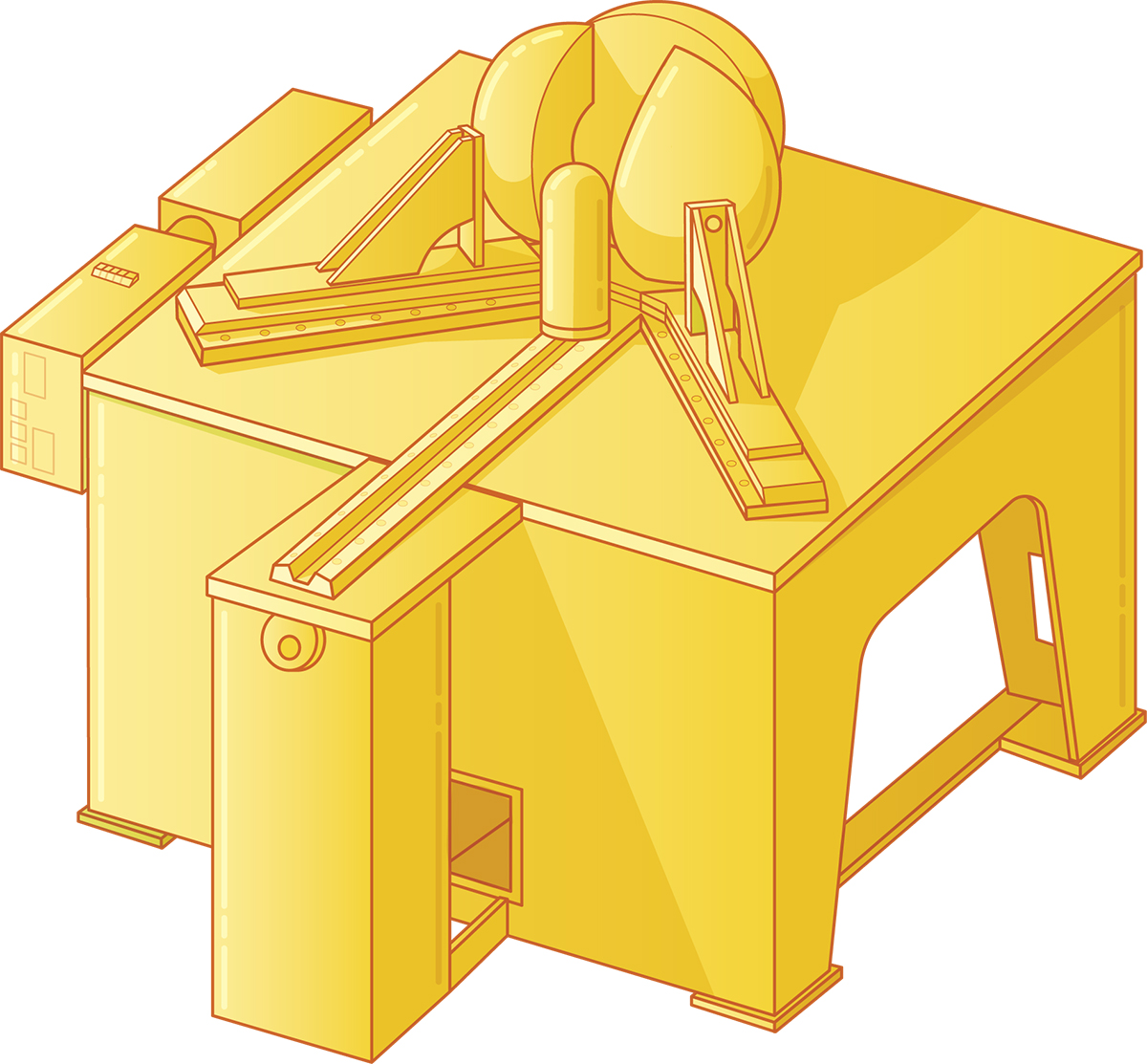
Comet was completely refurbished in the 1990s to support the heavier assemblies needed for certain kinds of experiments. More recently, Comet was used for the PARADIGM (PARallel Approach of Differential and InteGral Measurements) and Deimos projects.
Flattop
Flattop entered service in 1958 and is named after one of the villains in Chester Gould’s Dick Tracy comic strip. Unlike Comet, which brings together two subcritical masses of special nuclear material to achieve criticality, Flattop uses a preassembled core (comprising either two hemispheres of highly enriched uranium or two hemispheres of plutonium) that achieves criticality when several natural uranium reflectors are moved inward, directing stray neutrons back into the core. The simple geometry of this design was intentional, allowing researchers to conduct one- or two-dimensional simulations of Flattop experiments.
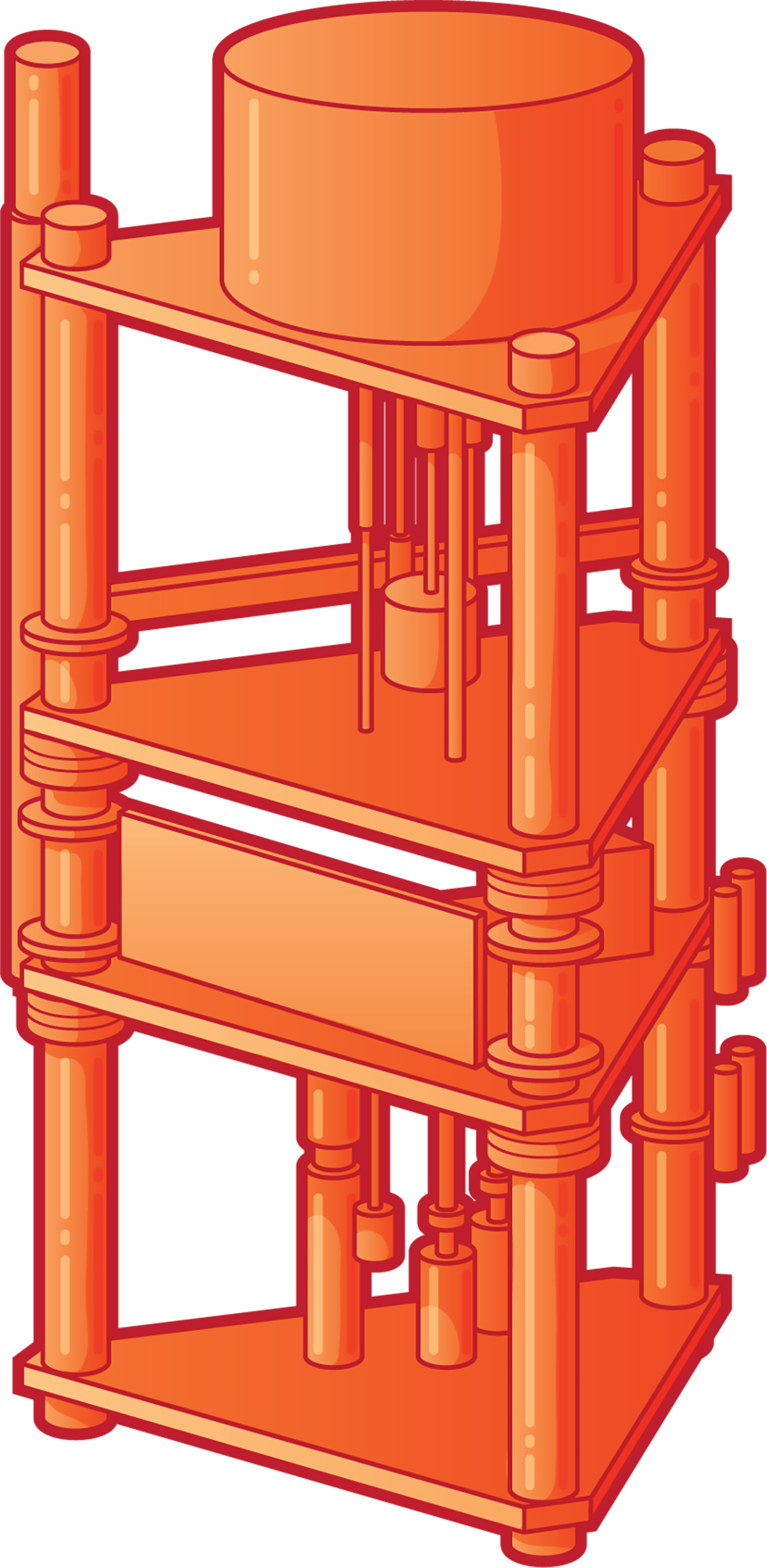
Although Flattop’s fixed geometry limits the types of experiments that can be conducted with the assembly, the machine provides an important way to validate nuclear data and to irradiate small material samples and foils. Over the decades, Flattop has been used for many benchmark experiments, providing measurements for nuclear data libraries. Flattop is also regularly used to train criticality safety experts and others who attend classes at NCERC.
Godiva IV
Godiva IV is the latest in a series of uranium “burst” assemblies built at LACEF—assemblies designed to create prompt fission reactions that yield sudden, intense bursts of neutrons and gamma rays. Godiva IV’s predecessor, a machine called Lady Godiva, was named after the historical noblewoman who, according to legend, rode naked through her city’s streets (the critical assembly’s name related to the fact that its nuclear material was “bare,” or un-reflected).
Godiva IV was built in 1967 and comprises a fixed core, three highly enriched uranium rods, and a uranium “safety block,” which are brought together to induce criticality. The heat produced by the reaction makes components in the assembly expand, creating a shock wave that causes a magnet in the safety block to release and separates the nuclear material, stopping the reaction automatically.
Over the decades, Godiva IV has been used to acquire data for dosimetry studies, materials science, fundamental neutron science, and more. Recently, Godiva IV was used to test criticality accident alarm systems.
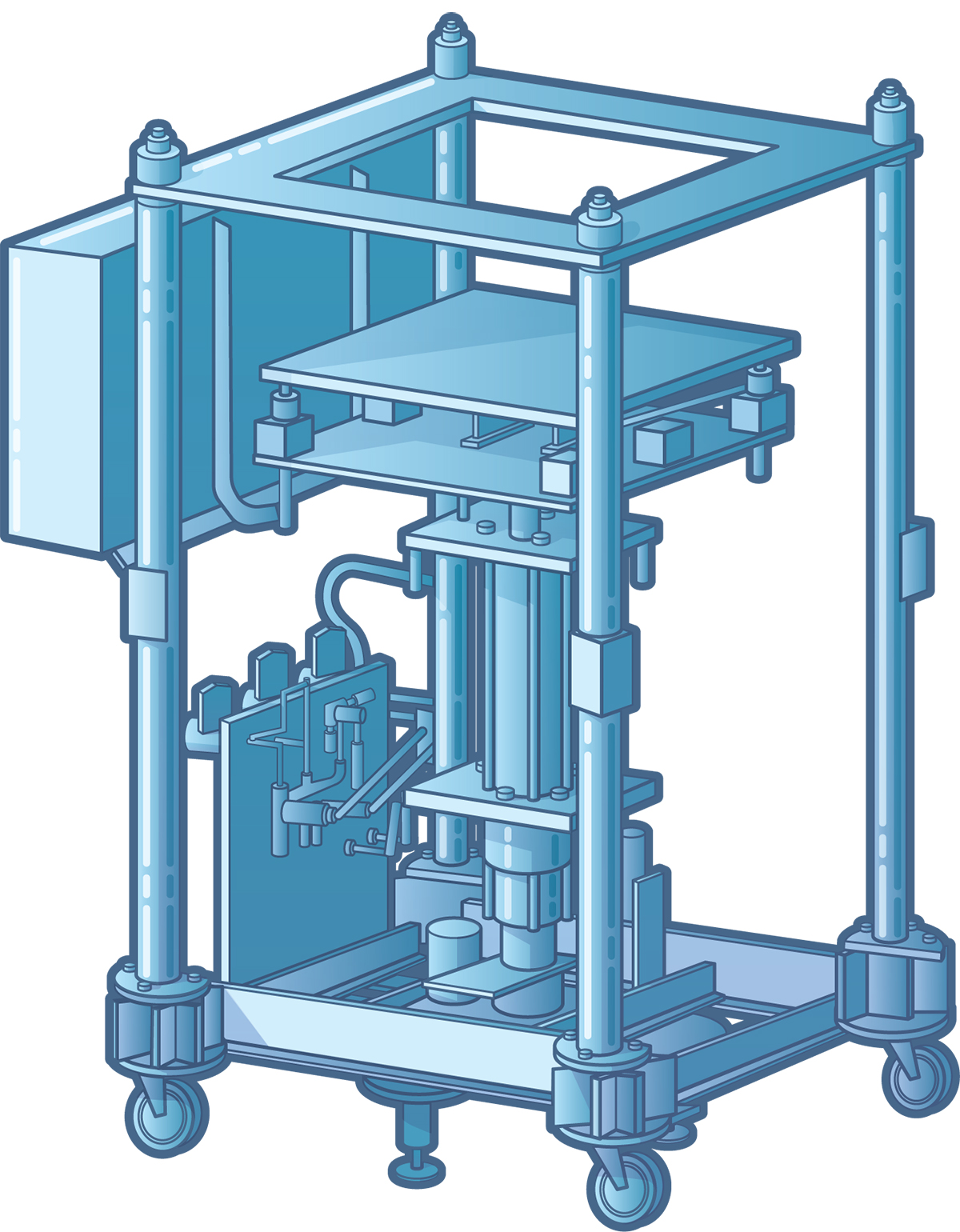
Planet
Planet was built at LACEF in the 1980s as an addition to Comet. Like Comet, the critical assembly consists of a movable lower platform and a stationary upper portion that allow for subcritical masses of special nuclear material to be brought together, yielding criticality. Planet’s upper platform can support smaller amounts of material than can Comet (2,000 pounds for Planet versus 22,000 pounds for Comet), but the wider opening at its center can accommodate different experimental configurations.
Like Comet, Planet enables a broad range of criticality experiments that, over the decades, have provided information about nuclear criticality safety and the critical masses of materials such as uranium, plutonium, and neptunium. Planet was recently used for the EUCLID (Experiments Underpinned by Computational Learning for Improvements in Nuclear Data) project. ★

